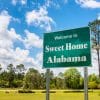Source: Point2 Homes —
As far as dream houses go, no two are alike: Some homeowners find old architecture irresistible, others are drawn to slick up-to-date features. While there’s no definite correlation between price and building age to back up this preference, some sources attribute selling costs up to 30% lower for old homes as opposed to newer ones, whereas others claim Americans pay vast amounts of money for frequently unsafe housing precisely because of that age-old charm. As it happens, available listings in certain markets tend to skew toward the older or newer side.
With this in mind, we wanted to take a closer look at markets that offer a wide pool of either old or new options. To gauge the current inventory of old and new homes for sale, we analyzed America’s largest cities with the highest concentrations of listed homes that are more than 50 years old compared to cities where most homes for sale are newly built in the past 10 years. Granted, although there’s no general consensus on what “old” or “new” means, this study defines old homes as those that were built in or before 1970, and new homes as those that were built in or after 2012.














